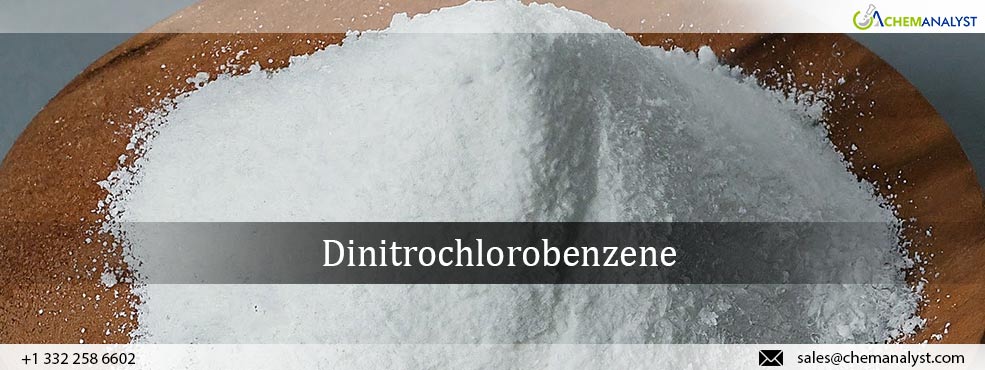DNCB Market Tumbles in Europe as Demand Wanes and Shipping Costs Ease
- 06-Sep-2024 3:05 PM
- Journalist: Emilia Jackson
In August 2024, Dinitrochlorobenzene (DNCB) prices experienced a significant decline in the European market, marking a shift from the trend observed in the previous month. This downturn is attributed to several factors, including decreased demand from end-users, easing freight rates, and a plentiful supply in the market. In response to these market uncertainties, participants adjusted their quotations downward, contributing to an overall bearish sentiment in the market.
In August, DNCB prices in India likely declined due to the overall slowdown in the country's manufacturing sector. The sector's growth moderated, with both output and sales rising at their slowest rates since January 2024. This deceleration was driven by changing consumer preferences and increased competitive pressures, which in turn dampened business confidence. Additionally, the sluggish pace of new export orders, the weakest since the beginning of the year, further contributed to reduced demand for DNCB. With inflation concerns also weighing on the market, manufacturers have been compelled to lower DNCB prices to stay competitive and maintain market share amidst weakening demand. As India is a key producer and exporter of DNCB, this trend also impacted the European market.
Moreover, the drop in DNCB prices in Europe was partly influenced by recent developments in India. Recently, a potential strike by port workers in India was averted through a last-minute agreement, which prevented disruptions at the country's major ports. Had the strike occurred, it would have led to increased backlogs and congestion, impacting the supply chain and potentially driving up prices due to delays. Instead, with operations continuing smoothly and demand easing, the European market benefited from a more stable supply situation. This stability was reflected in the reduction or cancellation of planned surcharges by carriers, which helped ease supply constraints and contributed to the observed decline in DNCB prices across Europe.
In addition, after the peak season demand and congestion in the Red Sea, ocean freight rates from Asia to Northern Europe and the Mediterranean began to level off or decrease. These rates dropped by approximately 8% from their July peaks. This reduction in shipping costs contributed to lower overall transportation expenses, which likely led to decreased costs for imported DNCB in Europe. As shipping rates eased, the reduced logistics costs helped to alleviate some of the pricing pressure, supporting the decline in DNCB prices on the European market.
Additionally, inflation rates in Germany and Spain fell more sharply than anticipated in August, increasing the likelihood of further interest rate cuts by the European Central Bank. Official data revealed that Spanish inflation dropped to 2.4% in August, down from 2.9% the previous month. This decline was largely due to a significant decrease in energy prices and favorable base effects. The easing inflationary pressures in Europe contributed to a reduction in overall pricing pressures, which in turn supported the observed decrease in DNCB prices.
According to ChemAnalyst, DNCB prices are expected to keep declining due to ongoing weak demand. As demand remains low, freight rates should face less upward pressure in September, contributing to further price reductions.



